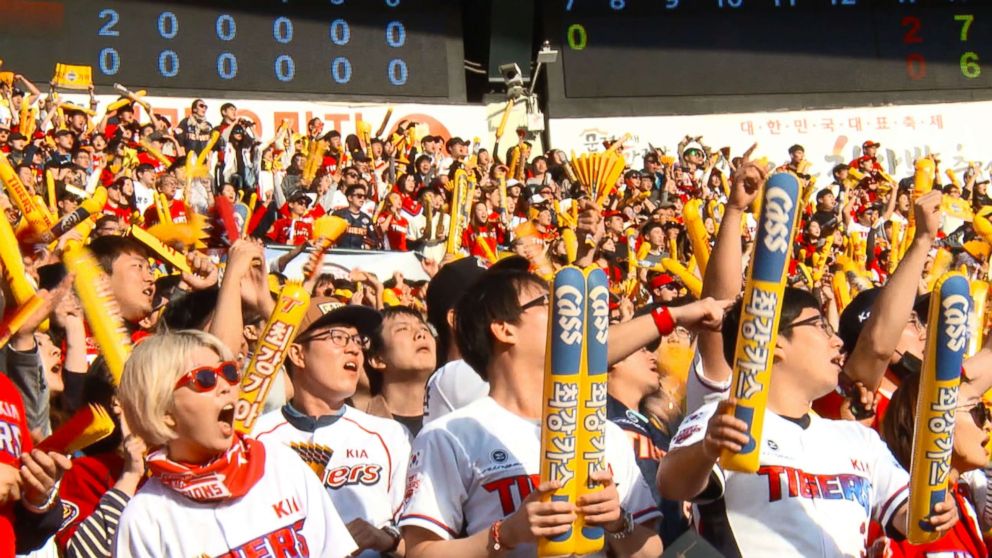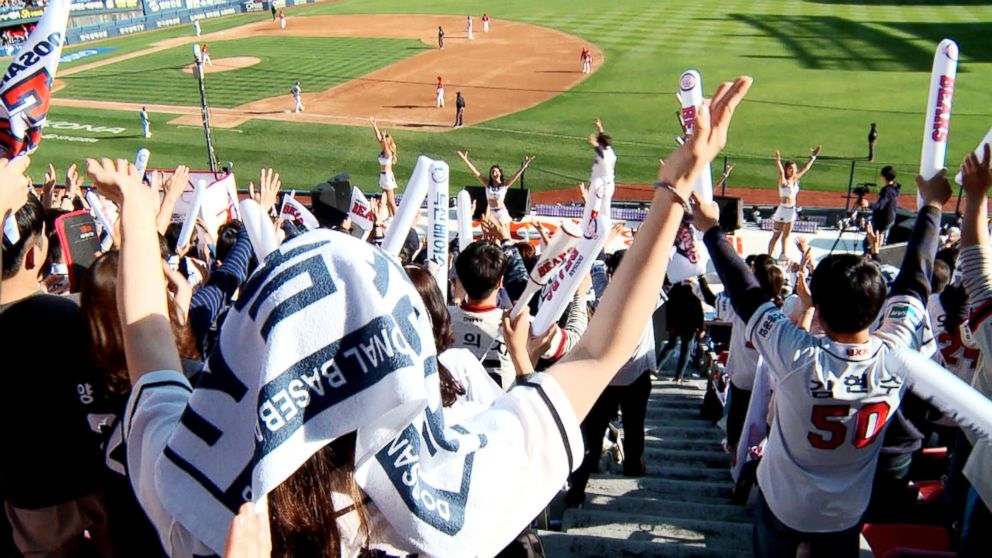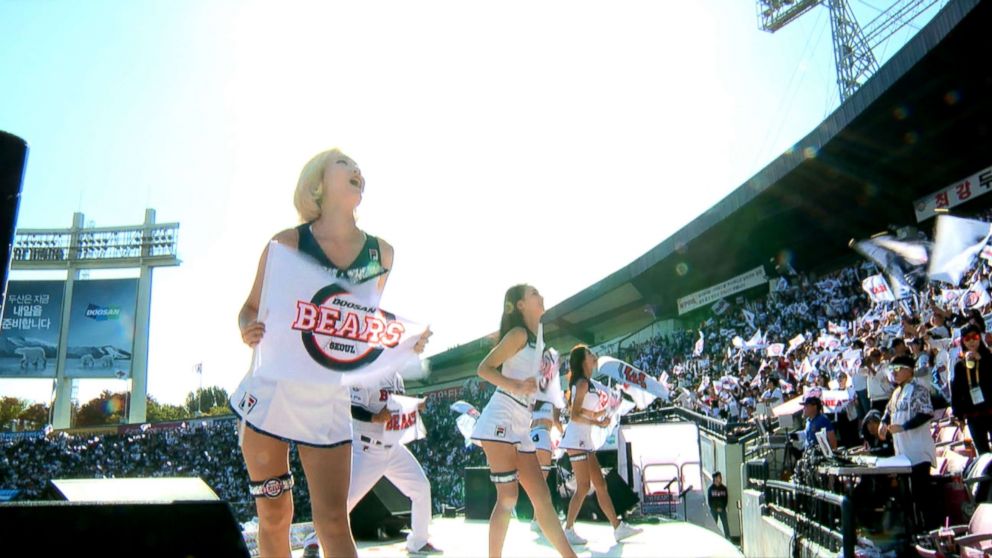A look inside South Korean baseball's elaborate 'cheer culture'
South Korean baseball's "cheer culture" is as important as the game itself.
SEOUL -- Drumbeats roar and electric music plays as people dressed in uniforms swing to the rhythm together. At first, it may seem like a rock concert, but this is actually what a South Korean baseball game is all about.
South Korean baseball's "cheer culture" is in many ways just as important as the game itself. Fans wear team uniforms and hit balloon sticks together to make some noise as cheerleaders dressed in shorts and tank tops show off their dance moves. In South Korea, cheerleaders are responsible for leading the crowd in between every inning, not just during halftime, like in basketball or football games.
When the drumbeats get louder, a male cheer master is responsible for leading fans in song and dance routines. Korean fans consider "cheer battles" in the crowd just as important as the action on the field, and many say mass cheering gives people a sense of togetherness.

“The loud noise is the best part of coming to baseball games,” said Young Park, a 29-year-old salesman who said he heads to the ballpark at least once a week with his girlfriend during baseball season. “I also watch the World Series through the internet, which is fun, but the passionate cheering of Korean baseball fans that fills up the stadium is one of a kind.”
Each team's fans have their own unique cheering style. The signature cheer of the Doosan Bears, whose home base is in Seoul, involves a white flag. The team hands out white flags with the Doosan logo in various sizes to fans to wave during the cheers.
The Busan-based Lotte Giants have their fans wear blow-up, orange-colored plastic bags on their heads to indicate that they promise to help clean up the stadium after the game. And the NC Dinos from the southeastern city of Changwon use paper cones instead of inflatable balloons to differentiate themselves from other teams.

Fans have a unique song to sing to each team's star player to encourage them. When a batter is up, the fans will sing his signature tune hoping for an infield hit.
For example, when cheering for the Kia Tigers’ batter Myungki Lee, fans will sing: “Hit and run! Kia Lee Myung ki, oh, for victory!”
Fans also have short and catchy chants for the opposing team's pitcher.
Lotte Giants fans, for instance, cry out “Ma!” to the other team's pitcher. Due to the constant stream of songs for different players and at different times, Korean baseball games can feel a lot like rock concerts, fans say.
“Korean baseball is somewhat like a concert,” said Boka Gang, a Doosan fan from Hokkaido, Japan. “I love cheering for my favorite team in this loud and fancy manner that can never be found in my country.”

Plenty of foreign fans have gotten into Korean baseball because of the cheers.
Janabel Lie is from Singapore and said she became a huge fan of Korean baseball when she visited the country on vacation during college in 2014.
“It's interesting to watch such fervent fandoms in sports. We cannot see such a culture elsewhere," she said.
She said she hopes to get more involved in the cheer culture while attending graduate school in South Korea this year.
“I love the fact that we can eat and watch the game inside the stadium," she added.
To keep fans going through all that cheering, Korean baseball games have plenty of snacks. From "Chi-Mac," a combination of chicken and beer to grilled pork barbecue and Tteokbokki, a rice cake stir fried in hot pepper paste, food plays an important role, too.
Spectators can order food by calling out the number written on their seats and the chicken vendor will hustle over with their delivery. Plenty of fans wash that down with a $3 beer. And then the cheering begins all over again.




